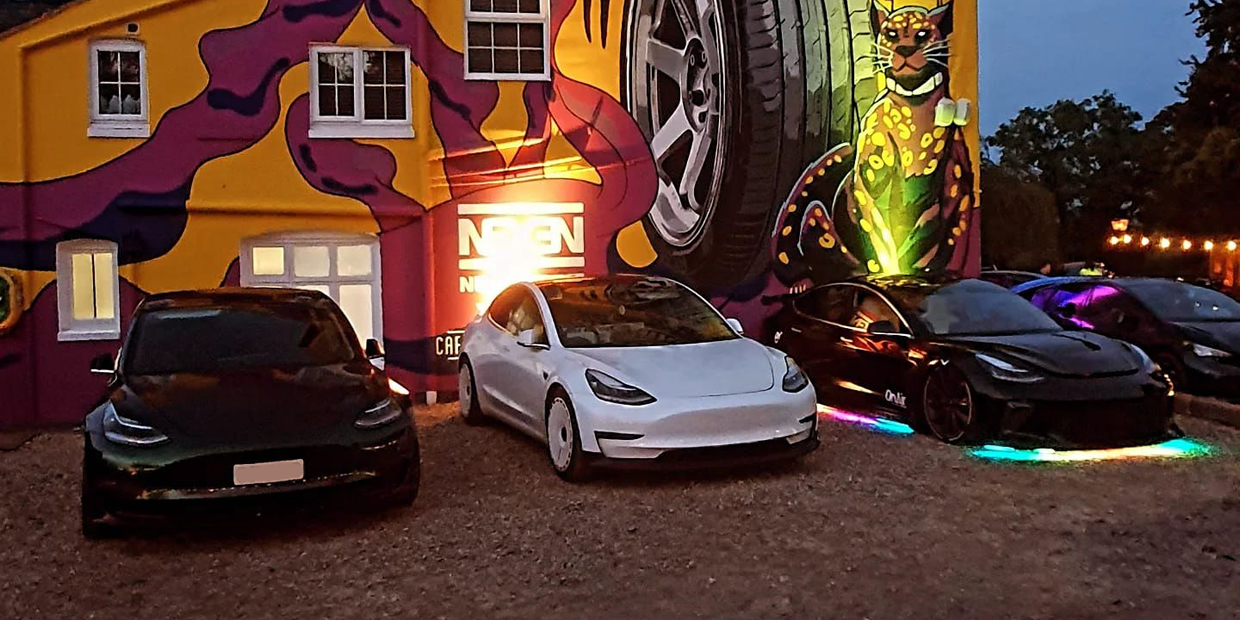Electric vehicles (EVs) are becoming a mainstream choice, offering impressive performance and eco-friendly driving. However, for car enthusiasts, a big question remains: Can you modify an electric car? The answer is yes, but the scope is narrower compared to petrol or diesel cars.
This is because modifications are typically cosmetic, and due to EVs’ unique design and software-heavy nature, there are fewer options for performance upgrades. To give you an idea of the possibilities of modifications that you could do, below we discuss everything you need to know.
Popular Modifications For Electric Cars
As a leading modified car insurance provider, we see it all in terms of modifications, but for EVs, the three main modifications that you’ll typically see include:
1. Cosmetic Changes
The most common type of modification for electric cars is cosmetic.
Although manufacturers such as Tesla, Porsche, Audi, and BMW produce EVs with sleek designs, many owners still want to add a personal touch. Therefore, cosmetic upgrades allow drivers to enhance the visual appeal without tampering with the technical aspects.
Common cosmetic upgrades include:
- Custom Paint Jobs: Bold colours or wraps can make your EV stand out.
- Wheels and Tyres: Larger alloys, coloured rims, and performance tyres are popular modifications.
- Lighting: Adding LED strips, underbody lighting, or tinted headlights creates a more unique look.
- Interior Customisation: Upgraded seating materials, ambient lighting, and dashboard wraps are great ways to personalise the cabin.
Cosmetic modifications are generally a safe option as they don’t interfere with the battery or software.
2. Performance Modifications
While performance upgrades for petrol or diesel cars often involve engine tuning or exhaust modifications, the options for EVs are more limited. Electric motors and batteries are typically controlled by complex software, and altering them can void warranties or cause damage. Still, some performance tweaks are possible.
- Suspension Systems: Lowering springs or coilovers can improve handling and give the car a sporty stance.
- Braking Systems: Upgraded brake pads and discs enhance stopping power, particularly for high-performance EVs.
- Tyres: High-performance tyres improve grip and acceleration.
3. Software Adjustments
In some cases, EV owners look to software updates to enhance performance. For example, many Tesla enthusiasts have explored third-party software upgrades to boost acceleration or unlock additional features. However, such modifications carry risks because manufacturers have systems in place to detect unauthorised changes, which can result in warranty cancellation or even software locks.
What About Modifying Electric Vans?
Electric vans are increasingly being used by businesses and adventurers alike, and many modifications are available that focus on practicality and functionality.
- Racking and Shelving: Ideal for tradespeople needing organised storage space.
- Roof Racks: These are useful for transporting ladders or equipment.
- Lighting: Interior lighting upgrades make working in the van easier during the evening.
- Campervan Conversions: Some EV vans are converted into campervans, with modifications like beds, kitchen units, and solar panels for added convenience.
If you intend to carry out any of these modifications, just with cars, you will either need modified van insurance or a campervan insurance policy.
Challenges of Modifying Electric Cars
Despite the growing interest in EV modifications, several challenges limit what owners can do:
1. Warranty Issues
Manufacturers often provide strict warranties on electric cars, covering batteries and motors. Therefore, any unauthorised modification can void the warranty, leaving owners to cover costly repairs.
2. Safety Concerns
Electric cars are built with high-voltage systems that require careful handling, which means that modifications that interfere with the electrical components can pose serious safety risks.
3. Limited Aftermarket Support
The EV aftermarket is still in its infancy compared to traditional cars, and while companies are starting to produce EV-specific parts, the options are fewer, and parts may be more expensive.
4. Limited Insurers
Due to the claim costs when EVs go wrong (i.e. batteries going bad), many brokers (including ourselves) currently don’t cover them.
The Future of Electric Car Modifications
The rise of EVs is pushing the automotive world into new territory, and the same applies to modifications. As more people adopt electric vehicles, the aftermarket industry is expected to evolve, offering new solutions for customisation.
Some emerging trends to watch include:
- 3D-Printed Parts: Affordable and customisable components.
- Battery Swapping: Innovations could allow performance-focused battery upgrades.
- Eco-Friendly Materials: Sustainable options for interiors and exteriors.
Conclusion
Electric car modification is still a niche, but it is growing rapidly. While you might not have the same level of freedom as with petrol or diesel vehicles, there are plenty of ways to make your EV unique. If you’re planning modifications, remember to check with your insurance provider to ensure your upgrades are covered.
As a specialist car insurance broker, we are certainly keeping an eye on the modifications and would love to hear all the new ways people are modifying their EVs!


